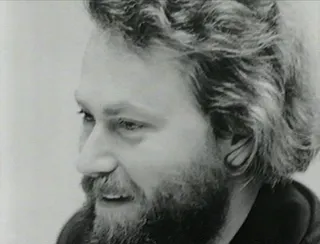
Donald Judd
Donald Judd is a pioneering figure in American Minimal Art. Through his 'Specific Objects,' Judd realized the minimalist goal of creating autonomous, non-referential works of art. These pieces form a unique and extensive vocabulary of shapes, including stacks, blocks, and progressions, that challenge traditional categories like sculpture and painting.
Biography of Donald Judd
Donald Judd was born in Excelsior Springs in 1928. From 1946 to 1947, he served in the Army as an engineer.
In 1948, Judd enrolled at the College of William and Mary, later transferring to Columbia University School of General Studies, where he earned a bachelor's degree in philosophy. He pursued a master's in art history under the guidance of Rudolf Wittkower and Meyer Schapiro while attending classes at the Art Students League of New York.
In the late 1940s, Donald Judd began his artistic career as a painter. His first solo exhibition, featuring expressionist paintings, was held at the Panoras Gallery in New York in 1957. From the mid-1950s to 1961, as he delved into the medium of woodcut, Judd's work transitioned from figurative to increasingly abstract imagery.
Between 1959 and 1965, he wrote art criticism for major American art magazines. By 1963, Judd had developed a fundamental vocabulary of forms — 'stacks,' 'boxes,' and 'progressions' — that would occupy his artistic focus for the next thirty years.
Judd married dancer Julie Finch in 1964, and they had two children together. The couple divorced in 1978.
In 1968, he purchased a building at 101 Spring Street, and used it as his New York residence and studio, gradually renovating it over the next 25 years and installing works he acquired or commissioned from other artists.
In the early seventies, Judd began taking annual trips to Baja California with his family, developing a deep connection to the clean, empty desert that profoundly influenced him throughout his life. During this decade, his art grew in scale and complexity, with Judd creating room-sized installations and producing radical works that broke away from classical European ideals of representational sculpture. He began working with enamel on aluminum in 1984.
From the late 1970s to the mid-1980s, Judd was in a relationship with artist, architect, and educator Lauretta Vinciarelli. In 1989, he met curator and museum director Marianne Stockebrand.
In 1990, Judd opened an atelier in a former liquor factory from 1920 at Mülheimer Hafen in Cologne, Germany.
The artist passed away in Manhattan from non-Hodgkin's lymphoma in 1994. Over his career, his work has been featured in more than 230 solo museum and gallery exhibitions worldwide.
Years:
Born in 1928
Country:
United States of America, Excelsior Springs, Missouri
Gallery: